
Epoxy is easy-to-maintain flooring with fewer drawbacks and more benefits. Epoxy is a thermosetting resin often applied as a protective and decorative coating over concrete flooring. The durable and robust nature of epoxy makes it a desirable option for various flooring applications. Epoxy coating over concrete provides high-performance, smooth, and durable surface that lasts for many years with the ability to with stand heavy loads. Epoxy flooring is superior over tiles as it is stain and dust resistant. If you are looking for easy to maintain, long lasting, aesthetically appealing floor then you may opt for epoxy. Epoxy Floors Houston is one of the leading concrete contractors that you can count on in this kind of project.
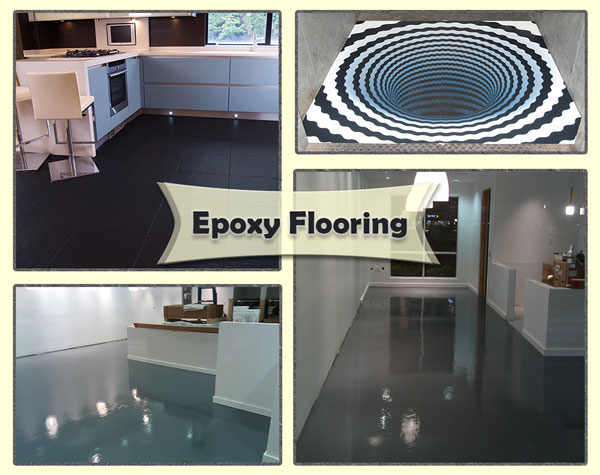
Characteristics of Epoxy Flooring
- It is created by combining two different materials, usually a hardener and a resin component.
- It is highly resistant to chemical products.
- It offers variety of colours.

- According to the Resin Flooring Association, epoxy has the high impact resistance, and is aesthetically pleasing.
- It is non-toxic. Unlike other flooring types, it doesn’t require harsh chemicals to clean it, making epoxy an eco-friendly flooring.
- It is stain resistant. The smooth, glossy finish of epoxy makes it easy to clean the floors.
- Epoxy is dust and dirt resistant, making it a better option than tile, which retains dust and dirt inside the cracks and grout lines.
- 3D epoxy floor is in trend due to its creativity and high performance. The installed 3D epoxy floor gives the perception of depth.
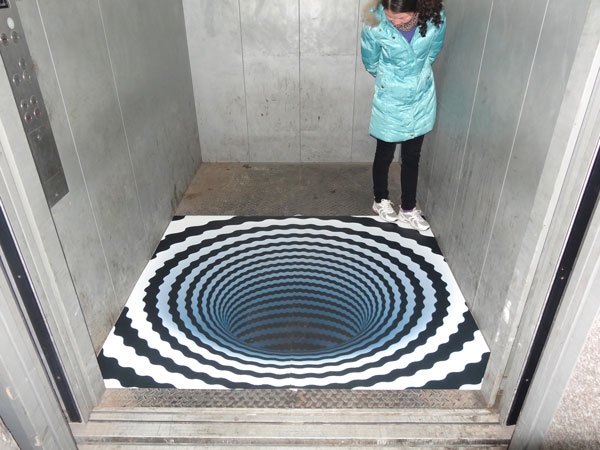
Also Read:
How to Avoid Cracks in Concrete?
Precautions for Tile Cracking & Tips to Repair Cracked Tile
Pros of Epoxy Floors
01. Appearance
- Epoxy floors are bright, professional and appealing. The smooth even surface is also very easy to clean and maintain. 3D epoxy flooring is a great choice for commercial use, i.e., garage. Professional garage floor coating contractor will know the right techniques to achieve the look you like the most.
02. Affordability
- As it can be installed directly over concrete and other flooring types, the installation costs are lower.
03. Resistance
- Epoxy floors are highly resistant to oil, fluid, cleansers, and so on. This is one of the main reasons they are frequently used in garages. They are also resistant to bacteria and germs, which makes them easy to sanitize. Hence it is an excellent choice for hospital and pharmaceutical buildings also.
04. Durability
- Epoxy floor has a longer lifespan than all other floor types except concrete. But it needs to be properly sealed and maintained. Besides, an epoxy floor coating requires concrete beneath it. Epoxy floor coating renders concrete exceptionally stable. Its high durability makes it most sought after flooring for commercial and industrial use
05. Jointless
- Epoxy floor is continuous and has no joints like tiles. Hence it looks better and prevents accumulation of dust and growth of bacteria over joints.
06. Protective
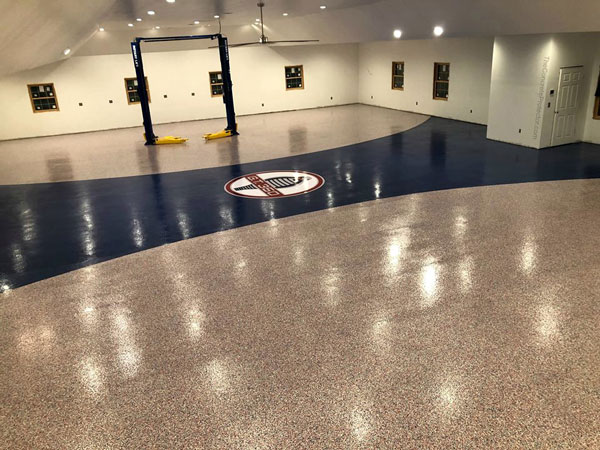
- The epoxy flooring protects the concrete beneath from moisture, stains, grease and cracks. In a long run, this saves a great deal on cleaning and maintenance costs by eliminating the need to clean carpet grout.
07. Variety

- Epoxy is a great choice to decorate the floors. It is an economical way to upgrade plain concrete and improve ambiance of a home. It is available in a variety of colors that add a smooth and elegant shine. 3D epoxy flooring adds depth and is more aesthetic.
08. Safety
- It enhances visibility inside the garage by reflecting light off the floor.
Cons of Epoxy Floors
01. Cracks
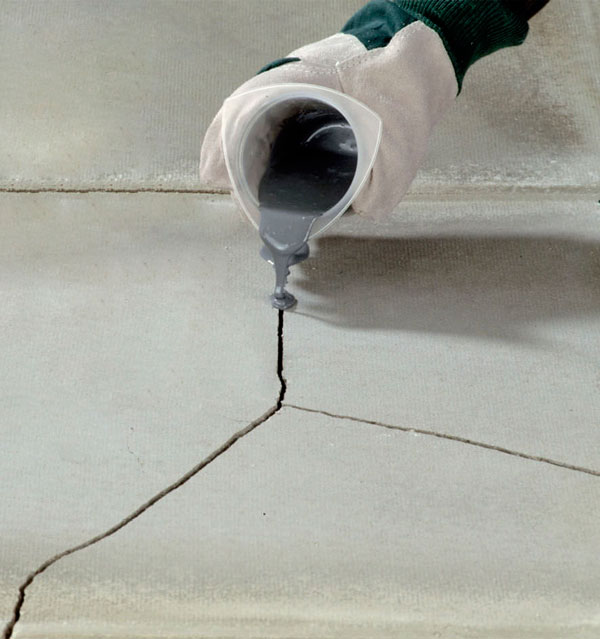
- Cracking and chipping are very common. Chipping starts on a small annoyance and gradually leading to large area of the coat peeling off the floor. The floor then, needs to be repaired.
Also Read:
Best ways to Repair Cracked Paint in Your House
How Moisture Change Affects the Development of Cracks?
02. Slippery
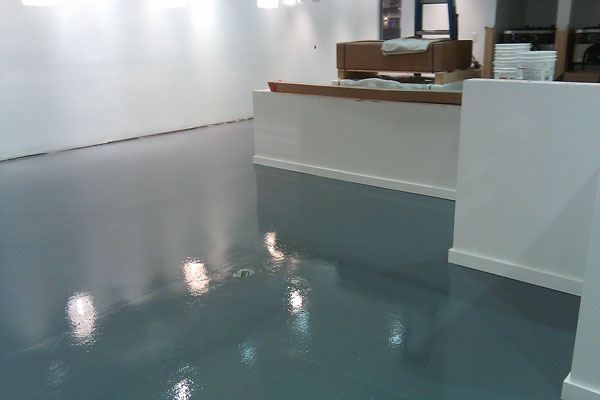
- Epoxy floors are generally skid resistant. But while it is wet and oil-covered epoxy can be very slippery.
03. Preparation
- It is a very tedious process and requires a lot of effort to make the existing floors ready to apply epoxy. The concrete floor should be clean and free from grease, oil or solvents and cracks need to be filled before the epoxy coating is applied. Cleaning concrete floors requires multiple attempts.
04. Application

- Applying the epoxy coating is a time-consuming process. It also takes 2-3 days to dry properly. Also, the first coat of epoxy must dry completely before adding the next coat.
05. Sensitivity
- Epoxy flooring needs to be installed exactly according to the instructions. If not done properly, the durability is compromised. It is very hard to clean paint over spray. The coating should be applied only when the humidity levels are low as the moisture can affect the adhesion and thereby durability of the epoxy.
06. Adherence
- The concrete floor should be dried, prepared and cleaned thoroughly before applying epoxy to avoid adherence issues. It will not stick well in a moist environment such as basement.
07. Moisture
- Since the material does not breathe once it cures, any moisture trapped beneath the surface could cause a problem once it evaporates. It may lead to the eventual need for repair or refinishing as buckling in the flooring material may develop in some cases.
08. Difficulty in Removal
- Once the epoxy is applied, changing colors or designs could be labor-intensive and costly. In situations, where the floor has to be repaired, removing the coating is very extensive and difficult.
Problems while Using Epoxy Flooring
01. Peeling Floors
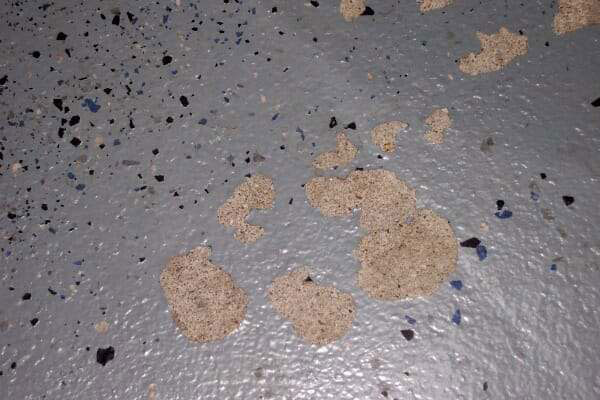
- Various factors can cause the epoxy to peel from the floors. The most common reason is improper preparation of the epoxy or applying the epoxy when the temperature is neither too cold nor the humidity is too high. Other factors that can cause floors to peel include improper preparation of concrete flooring. The floor must be clean and free from oil, grease and debris.
02. Moisture Built Underneath the Flooring
- This could occur when there is moisture in the concrete or when there is a temperature difference between the epoxy material and the substrate floor. After the floor is etched with acid, it should be completely dried before applying epoxy. This usually takes atleast 24 hours. If it is not properly dried, moisture will be trapped in the concrete’s pores and will rise and cause bubbles in the floor’s finish. Also, the moisture under the concrete slab causes pressure which forces the epoxy to get separated from the concrete’s surface, often taking pieces of concrete with it. A simple moisture test is advised to check if the floor is right for epoxy coating or not.
03. Air Bubbles Beneath the Epoxy
- Air bubbles in the epoxy can occur in the direct sunlight or when the temperature is too cold. They can also happen due to putting of epoxy on the porous concrete. To avoid air bubbles, this concrete need to be properly prepared to the seal epoxy correctly. Air bubbles are also visible if epoxy is not mixed appropriately. Mixing too fast with a paddle mixer could trap air in the epoxy. which appears as a bubble in the finish when applied over concrete. Don’t pump the paddle mixer horizontally and vertically or run it too fast near the surface. This will suck air into the epoxy and create an unsatisfactory finish. Problems arise if the resin and the hardener are not mixed in the right proportion and at the right time. The mixing instructions must be followed carefully. Some products require the mixed batch to sit for specific induction period. Not allowing for induction period may cause the epoxy to fail to cure and harden properly. Air bubbles can also appear if you apply epoxy when it is too hot outside. Hot temperature gives you less time to apply the epoxy, and air bubbles can appear in the finish.
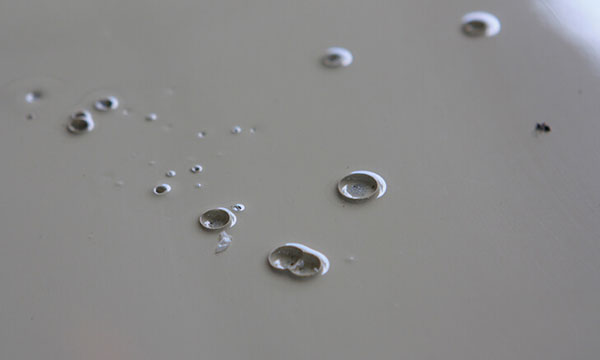
- Air bubbles can also appear if you apply epoxy when it is too hot outside. Hot temperature gives you less time to apply the epoxy, and air bubbles can appear in the finish.
04. Preventing these Problems
- To avoid the problems occurring due to epoxy, you must ensure that the concrete is properly prepared and that the environmental conditions are right. Also, the epoxy has to be correctly mixed to avoid color variations and air bubbles.
- Epoxy should never be applied by own self. It has to be done by skilled and experienced professionals only, such as GLI Epoxy Flooring, which offers expert solutions for durable and visually appealing epoxy floor installations.
- You can contact professional companies like Dubond, Epoxy Flooring Coral Springs, Manchester Epoxy Floors, Better Seal Coatings, etc. in your areas.
05. Uses of Epoxy Flooring
Epoxy coatings are used over the concrete floors in various commercial and industrial applications. It is used in manufacturing plants, pharmaceutical buildings, commercial and retail stores, industrial plants, food or beverage plants, laboratories, warehouses, hospitals, showrooms, garages, airplane hangars, and so on. According to the Resin Flooring Association, this floor finish is usually preferable in the areas of high footfall, trolley and rubber wheeled traffic.
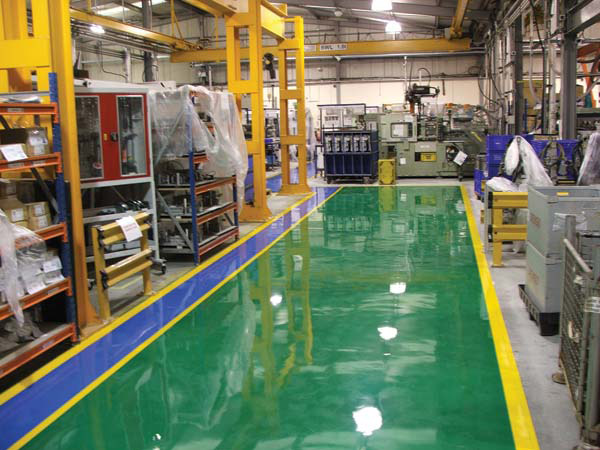
Summing up, epoxy flooring gives a long-lasting durability and being jointless, are aesthetically appealing. Also, it provides a wide range of colours and 3D imaging. It offers a modern visual appeal that designers love because of its ability to create a good visual over an extended period of time.
Also Read:
Tile Adhesive & Its Various Types
Grouts in Construction & Their Types!
12 Reasons why Tiles Get Buckled or Popped-up or Tent































